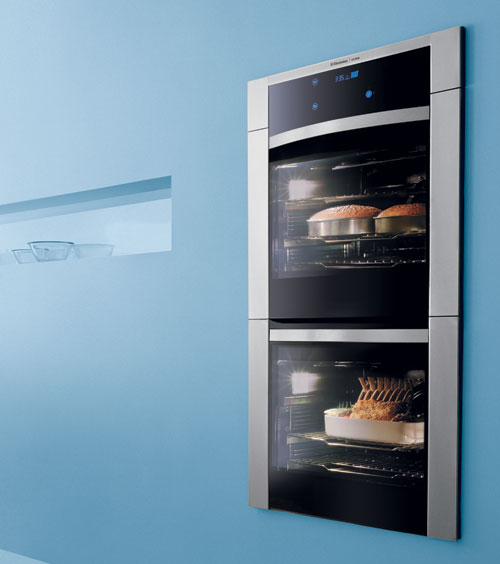Built-in Appliances: Combining Thoughtful Design Innovation with Superior Energy Performance
Appliance manufacturers appear to be in tune with these observed trends and have invested a lot of thoughtful design into their products to address them. Probably most noticed is the incorporation of electronic control panels that allow users to plan how and when appliances will operate. Some are even touch-activated providing access to all operating functions that then fade away any choices not selected to provide clear information on what the appliance is doing. This interactive control panel concept makes sense in an environment where so many other things in our lives are controlled in a similar, electronic, manner. Further, this type of control is being applied to a variety of appliance types. Cooking appliances can be programmed for a variety of temperatures, cooking times, and sequences. Refrigeration appliances can be programmed for multiple custom or pre-set temperatures making it possible to store or serve items at their ideal temperatures. Even the lighting in appliances can be controlled to be variable in a transition manner to avoid glare yet provide ample interior light.
 |
Glass-front oven doors are being made with enhanced materials to keep the heat in and be cool to the touch. Photo courtesy of Electrolux ICON® |
Â
When it comes to the physical features of appliances, manufacturers are keenly aware of optimizing those aspects as well. So, oven racks for example, can be designed to glide with greater ease and extend fully for effortless access to cooking food. Glass-front oven doors, notorious for being hot to the touch when the oven is in use, are being made with enhanced materials to keep the heat in and be cool to the touch instead. The additional benefits of the glass allow not only a view of what is cooking, but a hard smooth surface that is easy to keep clean.
 |
Appliances increasingly come with more sophisticated electronic control panels that respond to consumer demands and provide more options for better performance. Photo courtesy of Electrolux ICON® |
Â
Refrigeration appliances are increasingly being used for multiple functions such as automatically dispensing cold water and ice. A general concern about water quality has prompted many consumers to use water filters of some type on their drinking water faucets, but that approach can be defeated if the water comes from a refrigerator with an unfiltered line or from ice made of unfiltered water in a freezer. The response by appliance manufacturers has been to incorporate integrated water filtering systems inside of the water and ice dispensing portions of their products creating cold, clear, filtered water and ice.
With all of the above trends and developments in mind, many architects are selecting appliances that can be built-in and blend with the overall design of the space that they are a part of. This approach creates not only a more unified appearance but also a more consistent ease of use by the owners. However, the remaining important consideration of sustainability related to both longevity and energy use warrants some detailed discussion in order to address superior design and performance.









